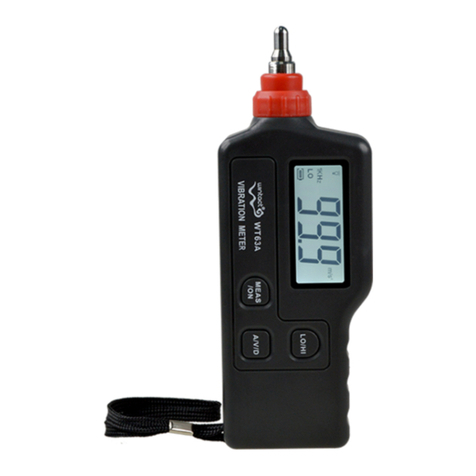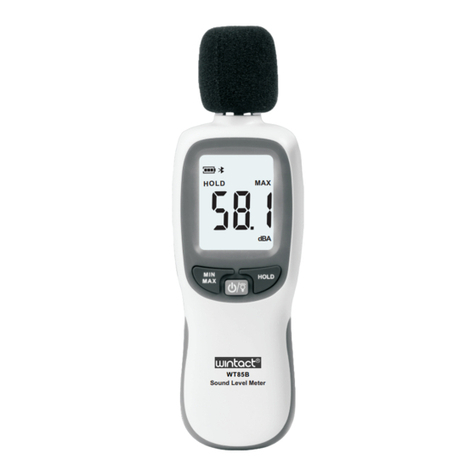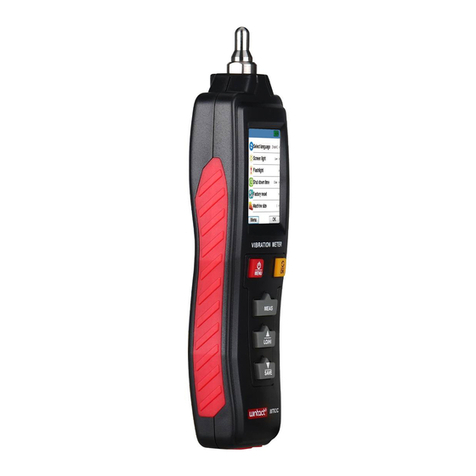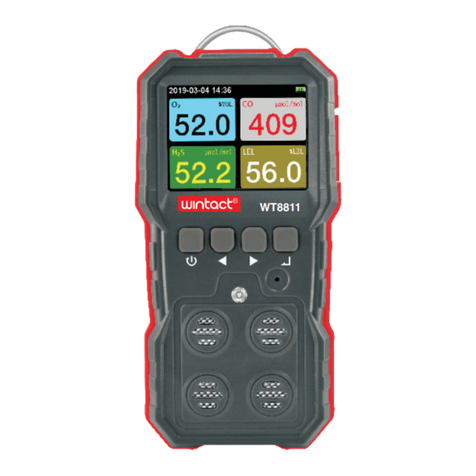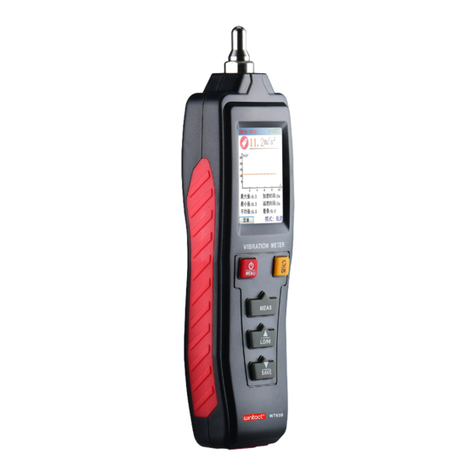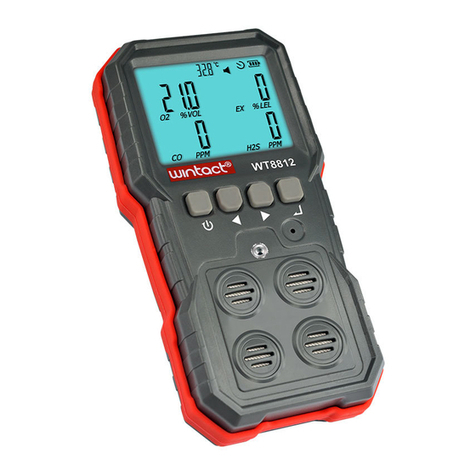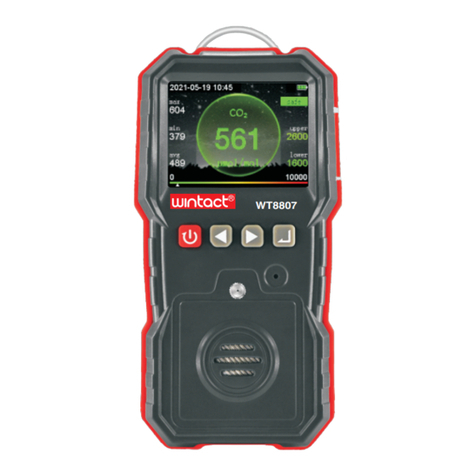
13、Avoid measurement error
-1 1--1 2-
12.5. Measurement of composite shape:
When measuring materials of composite shapes (such as
elbow of pipe), the method described in 12-4 can be adopted,
except that the measurement should be performed for two
times to get two readings by placing the crosstalk spacer of
probe vertical or parallel with the axis, the smaller of which is
the thickness of the measured point.
12.6. Non-parallel surfaces:
In order to obtain a satisfactory ultrasonic response, the other
surface of the material to be tested must be parallel or coaxial
with the surface to be measured, otherwise it will cause
measurement errors or no reading.
12.7. Effects of material's temperature:
The thickness of material and the transmission speed of
ultrasonic wave are affected by temperature. For high
measurement accuracy, separately measure samples of the
same material under the same temperature condition, then
calculate the measurement error caused by temperature, and
correct error with parameterS. For steel, high temperatures will
cause big error (measured values are smaller than actual data),
and this way can also be used to correct errors.
12.8. Materials of attenuation:
For some materials with fibers, pores, and coarse particles,
they cause great scattering and energy attenuation of
ultrasonic waves, resulting in abnormal readings or even no
readings (usually the abnormal reading is smaller than the
actual thickness), in which case the material is not suitable to
be tested with this thickness gauge.
12.9. Samples for reference:
A material of known thickness or sound speed helps calibrate
the instrument. At least one sample for reference is required to
calibrate the instrument. The ultrasonic thickness gauge is
equipped with a steel sample with thickness of 4.0 mm. Please
refer to calibration instruction in item 9 of this manual for
calibration method.
13.1. Ultra-thin material
With any ultrasonic thickness gauge, if the thickness of the
tested material falls below the probe's lower limit, measurement
errors will appear. If necessary, the minimum thickness limit can
be measured by sample comparison.
When measuring ultra-thin materials, sometimes an error
called "double refraction" occurs, in which the measured value is
equal to twice the actual thickness. Another error is called "pulse
envelope and loop jump", in which the measured value is bigger
than the actual thickness. To avoid such errors, repeat checking
measurement of critical thin material.
13.2. Rust spots and corrosion pits
Rust spots and corrosion pits on the other surface of the tested
material will cause readings to change irregularly or no reading
in extreme cases, and small rust spots are sometimes difficult to
detect. When pits are found or suspected, be careful with the
measurement of this area, and place the crosstalk spacer of
probe at different angles for multiple tests.
13.3. Material identification error
If you have calibrated the instrument with one material and use it
to test another material, an erroneous result will occur. You
should be careful when selecting the correct sound speed. Or, if
the sound speed in the actual test displays certain deviation from
that of calibration, errors may also occur. Please make
adjustment in use.
13.4. Probe abrasion
The surface of probe is made of acrylic resin. After the
instrument is used for a long time, the roughness of probe
surface will increase, resulting in a decrease of sensitivity. If the
user can determine errors caused by this, the probe surface can
be polished with a small amount of 500# sandpaper or whetstone
to smooth surface and ensure parallelism.
If the result is still unstable, you may need to replace the probe.












